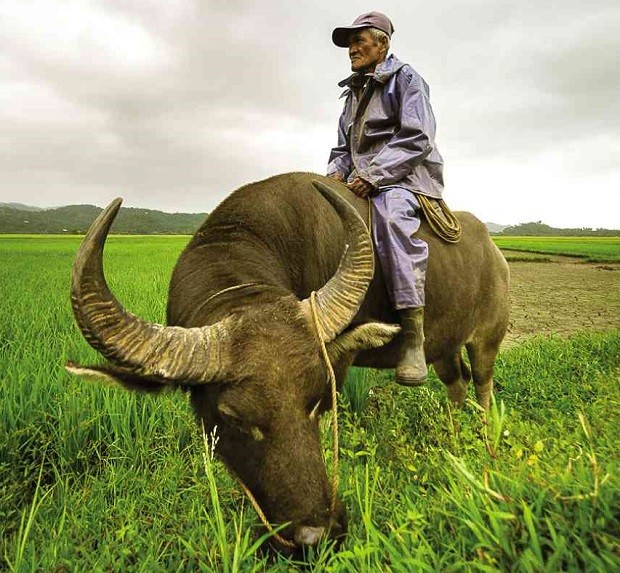Tillers mull ditching diesel tractor for good ol’ carabao

Farmer in Cagayan lets his carabao graze. (INQUIRER FILE PHOTO)
PIÑAN, Zamboanga del Norte, Philippines — Amid the impact of fuel price increases, farmers used to operating tractors may need the trusty old carabao to till their rice paddies again.
Elmer Ollanas, a municipal agriculturist in Molave, Zamboanga del Sur, said the rising cost of fuel had adversely affected the income of rice farmers to the point that many of them were already thinking of returning to manual farming, or the use of carabaos.
Most farmers in Molave had long ago switched to mechanized farming. They were grinning when the Inquirer asked some of them when they stopped relying on carabaos—for a number of these farmers, since as long as 30 years ago.
“[N]ow that the price of diesel is getting very high, we may have to turn to manual [planting] again—back to using carabaos,” Ollanas said in an interview.
Racelo Navarro, Molave’s disaster risk reduction and management officer, said: “If [the fuel] price keeps skyrocketing, the farmers have to go back to… the traditional way of farming using carabaos.”
Article continues after this advertisement“[But] the problem is, where are the carabaos now?” he added.
Article continues after this advertisement‘Domino effect’
According to the farmers, about 30 percent of their expenses go to diesel, the fuel for their tractors, harvesters and land leveling equipment.
“The money that they use to plant rice gets so depleted that there would hardly be enough to spend on fertilizer, [and] this will result in a lower harvest,” Ollanas said.
Navarro said rising fuel prices “have a domino effect from the farm to the table of every household.”
“Food security will be affected,” he said.
Of the P40,000 to P45,000 that farmers must raise to be able to grow rice in a one-hectare piece of land, fuel costs could easily use up P18,000, or more than 30 percent of the capital, Ollanas said.
He said that when fuel prices were still at P40 to P45 a liter, farmers would only need P25,000 to P30,000 in capital.
What has made rice farming more expensive is its heavy dependence on farm implements that require diesel.
Need to innovate
For Junrey Buracho of Barangay Tiparak in Tambulig town, rice farmers like himself need to innovate.
In his half a hectare of rice land, he did away with the use of urea as fertilizer and reduced the use of ammonium in the soil.
“We resort to manual land leveling and limited hiring of laborers,” he said. “We used to hire the services of at least six laborers before. But now, we only pay for wholesale work. The prices of fertilizers are also going up.”
To increase his income for the family, Buracho is now raising free range chicken and planting more vegetables.
According to him, the community in Tiparak is endeavoring organic farming. Instead of using urea, villagers use food waste and mix these with molasses as organic fertilizer.
“We are the first ones to eat our rice, so we make sure that we are not using any chemicals. We also try our best not to increase our prices,” Buracho said.
Ollanas appealed to the national government to assist the farmers, who “have yet to receive any subsidy,” he said.
“[The] conditions require immediate national intervention, otherwise everyone will [go] hungry,” Ollanas said.
RELATED STORIES
‘3-in-1’ carabaos developed in Nueva Ecija to boost farmers’ earnings
Farmers fearing rice imports told: Milk your carabaos
Fewer carabaos left in Pangasinan as slaughter for food continues